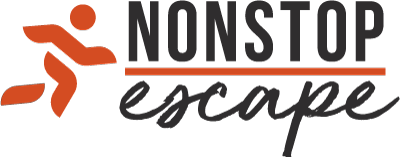
You’ve seen the stories. People flying first class to Tokyo for $63. Booking five-star hotels for free. Racking up dozens of flights without paying a cent of cash fare. The tool behind it all? Travel hacking with points and miles.
It’s not a scam. It’s not just for influencers. And it doesn’t require spreadsheets and 30 credit cards (unless you want to go that route).
Travel hacking is simply using loyalty programs—airlines, hotels, and credit cards—to turn everyday spending into free (or nearly free) travel. If you’re smart and strategic, you can unlock thousands in value per year. No coupons. No gimmicks. Just system optimization.
Here’s how to do it—step by step.
Step 1: Know the Two Types of Points
All points are not created equal. Before you start earning, you need to understand where you’re aiming.
1. Transferable Credit Card Points
These are the gold standard. Why? Because they’re flexible. You can move them to airlines or hotel partners when needed.
Top programs:
- Chase Ultimate Rewards (transfer to United, Hyatt, Southwest, and more)
- Amex Membership Rewards (transfer to Delta, ANA, Hilton, etc.)
- Capital One Miles (transfer to Turkish, Air Canada, Singapore Airlines)
- Citi ThankYou Points (transfer to JetBlue, Avianca, and others)
Why they matter: You can cherry-pick the best transfer partner based on your destination, availability, or redemption value.
2. Co-branded Points
These are tied to one airline or hotel chain.
Examples:
- United MileagePlus
- Delta SkyMiles
- Hilton Honors
- Marriott Bonvoy
Why they matter: These can be easier to use for specific routes or stays, but offer less flexibility overall.
Step 2: Start with a Travel Rewards Credit Card
This is the engine of your travel hacking setup. You want a card that earns either transferable points or points with a program you’ll actually use.
Top starter cards (as of 2025):
- Chase Sapphire Preferred – 60,000-point bonus after $4,000 spend; strong all-around travel value.
- Amex Gold – Great for food + travel; earns Membership Rewards.
- Capital One Venture – Flat 2x earning; simple and flexible.
- Citi Strata Premier – Underrated but powerful; good transfer partners.
If you’re loyal to an airline or hotel chain, consider a co-branded card in addition to your core card—not as your only one.
Important: Always pay your balance in full. Travel hacking only works if you avoid interest charges.
Step 3: Maximize Signup Bonuses
Signup bonuses are where the real value is.
A typical bonus gives you 50,000–100,000 points for spending a certain amount in 3–6 months. That alone can get you:
- A roundtrip economy flight to Europe or South America
- 2–3 nights at a luxury hotel
- One-way business class to Asia with the right partner
Tips to hit the bonus:
- Time it with a large purchase or trip
- Put all your daily spending on the card for the first few months
- Pay rent or bills with a small fee if needed (sometimes worth it to unlock the bonus)
Step 4: Know the Sweet Spots
Every loyalty program has under-the-radar deals—called “sweet spots”—that deliver crazy value if you know where to look.
Examples:
- Turkish Miles & Smiles: U.S. to Hawaii for 7,500 miles one-way in economy
- ANA (via Amex): Roundtrip business class U.S. to Japan for 75,000–90,000 points
- Avios (British Airways): Intra-Europe flights for 4,000–6,000 points one-way
- Hyatt: Free nights start at just 3,500 points—way better value than Marriott or Hilton
Research sweet spots before you transfer points. Once transferred, they’re stuck.
Step 5: Earn More Points Daily (Without Flying)
You don’t need to fly every week to rack up points. You just need to be strategic.
Smart ways to earn:
- Bonus categories: Use different cards for groceries, dining, gas, etc.
- Shopping portals: Click through airline or credit card portals before buying online
- Dining programs: Register your card with airline dining networks for extra miles
- Referral bonuses: Most cards give you bonus points for referring friends
- Travel booking: Some cards earn more when booking through their portal (Chase, Amex)
It’s a game of stacking. One purchase, multiple points sources.
Step 6: Redeem Points the Smart Way
You have points. Now use them like a pro.
Avoid bad redemptions like:
- Gift cards
- Merchandise
- Booking basic economy flights through portals
Instead, aim for:
- Transferring points to airlines or hotels
- Booking international flights in business or first class
- Stays at Hyatt or small independent hotel chains via transfer partners
Check sites like:
- Point.me – Find award availability across multiple airlines
- Seats.aero – Discover last-minute premium cabin space
- AwardWallet – Track all your balances and expiration dates
Step 7: Think Long-Term with Strategy, Not Random Cards
Don’t chase every card you see on Instagram.
Start with a core transferable card (like Chase Sapphire or Amex Gold), then expand based on your goals:
- Want luxury hotels? Add a World of Hyatt card or Amex Hilton Aspire
- Prefer free domestic flights? Pick up a Southwest or Delta card
- Into premium travel perks? Consider Chase Sapphire Reserve or Amex Platinum for lounge access, credits, and elite status boosts
Once your foundation is set, you can branch into multiple-card strategies (a.k.a. the “wallet stack”).
Bonus: Tools That Make Travel Hacking Easier
A few tools that take the guesswork out:
- AwardWallet – Tracks your points, expiration dates, and loyalty programs
- MaxMyPoint – Finds best value hotel redemptions in real time
- Roame.travel – Visual award flight search by date and region
- CardPointers – Helps track which card to use for each type of spending
Most are free or offer a solid free tier. Worth using.
Travel hacking isn’t a get-rich-quick scheme—it’s a system. Set up the right cards, know how points work, and you’ll unlock travel that’s cheaper, smoother, and way more fun.
You don’t need 20 cards. You don’t need to fly every week. You just need to treat your points like a currency—and spend them with the same attention you’d give real cash.
Because with the right moves, one smart signup bonus can take you around the world. And once you get a taste of booking a $4,000 flight for $5.60, you’ll never go back.







